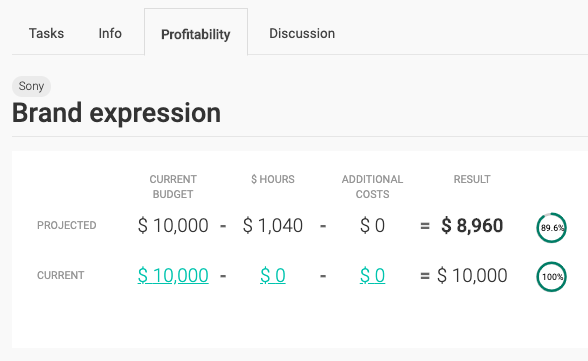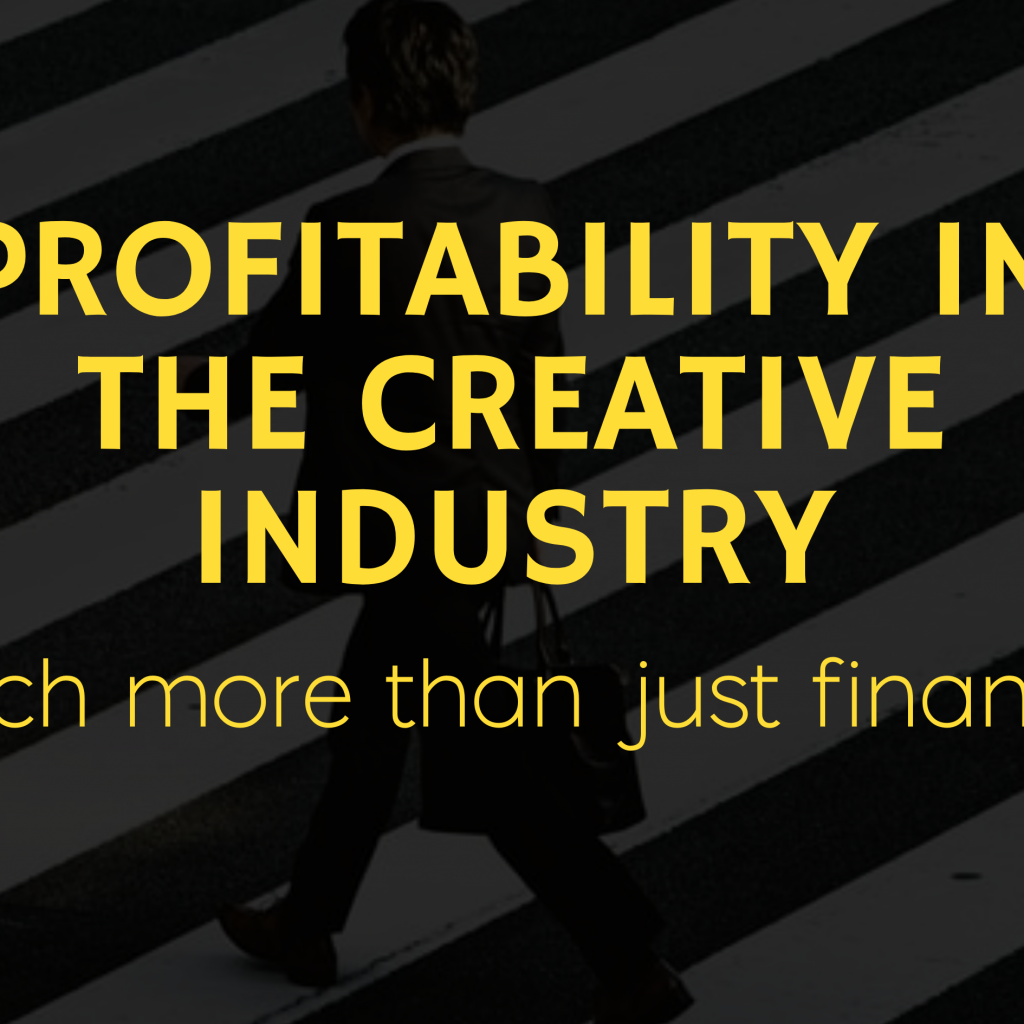There is no need for a paper that explains in general terms the importance of profitability in any company or industry. Except for NGOs or state-funded agencies, every business seeks to generate profit in exchange for meeting the needs of the buyer.
If you are reading this, it is because you belong to the service industry, either traditional advertising or marketing, and the idea of this article is to argue the importance of knowing the profitability of your services.
Surely you know it at a company level, but it is likely to be difficult for you to know it at a service, customer and, above all, project level.
Why is it important to have visibility at this level? Because in the creative industry, profitability is the MAIN factor that causes chronic problems of overwork, lack of growth and turnover.
Profitability (or lack thereof) has a direct impact on the quality of your creative’s work, timely delivery of work and customer satisfaction.
If you agree with the above, the following paragraphs may serve to reaffirm your operation or add details that you did not consider.
And if you do not agree that the profitability of your projects is the most influential factor over the creative quality, then this is for you.
I promise you that at the end of this article you will have a completely different view than the one you had 5 minutes before reading.

THE IMPORTANCE OF PROFITABILITY
Profitability enables us to:
- Project the sustainability of the business
- New business or pitch efforts
- Choice of services to offer
- Recruitment
- Wages
1) BUSINESS SUSTAINABILITY
How is this calculated?
To calculate profitability per project in the service or intangible industry, the necessary formula is as follows:

In the service industry, to calculate profitability we must take into account the cost per hour and the number of hours worked in the service offered, which affects the number of hours estimated to be worked by our team and its miscalculation is the fundamental cause of overwork as explained in this article.’
To solve this problem, COR allows the employees of an agency to automate time tracking, projects and clients they work on. In such a way that it will be possible to understand and project the profitability of the business in real time.
2) PITCHING EFFORTS
Should we participate in a bidding process or a pitch to get a new client?
By knowing the budget offered by a prospect, tools such as COR’s project templates will allow us to use estimates, include the team in question and know the probable profitability of performing such a service before executing it.


In the case that it is within our profit margins, it will also be possible to compute the cost/time that it took us to perform the pitching effort and add it to the cost/time of executing the service, so that we can obtain the real profitability of the whole process.
3) CHOICE OF SERVICES
By correctly measuring profitability per project, agencies often realize that not just one client, but an entire vertical of services regardless of the client in question offers low or no profitability.
Therefore, based on these findings, the agency may choose to stop offering that service and concentrate its efforts on the services that are.
4) RECRUITMENT

If all the clients we serve from the vertical “strategy” are not profitable we have 2 options:
1) Optimize them to be profitable (difficult if all of them are not)
2) Stop offering it and migrate our operations to the verticals that are.
The problem is that we have already hired 30% of our staff around a service that does not suit us.
The lack of profitability measurement per project affects profitability, workload and even the HR process.
Decanting unprofitable services and specializing our agency around services that are, makes the search more specific with probably better qualified candidates.
In turn, that specialized candidate will receive jobs led by account executives exposed to more specific clients, thus being able to understand them better.
Added to this, the team members will achieve efficiency growth by specialization, both artistically and in terms of additional costs/suppliers/costs per quantity, thus achieving a virtuous circle where profitability, human resources, efficiency in capacity and costs feed each other around the quality or output generated.
5) SALARIES
The lack of accurate financial visibility not only impacts our agency’s balance sheets, but is the main trigger of turnover and overwork in the industry.
Why?
Because serving unprofitable clients implies that we do not know the amount of hours required beforehand to perform such service, generating an incorrect labor planning that concludes in overwork (unprofitable).
If the unprofitable services we offer are many, then we will not be able to grow economically in a predictable manner, much less increase the salaries of the team members we wish to retain.
Therefore, if our team is overworked and underpaid, we can expect to have turnover as they will be tempted to accept marginally superior job offers from our competition.
Conclusion
The profitability analysis must be taken holistically. This factor is the main agent of change for the decision making that affects every instance of the agencies.
The correct measurement of this factor is the necessary step to plan the execution of our services, to avoid the work overload of our team, to assure the fulfillment of the deliveries to our clients and to promote a work environment that fosters creativity without operational or financial barriers.













